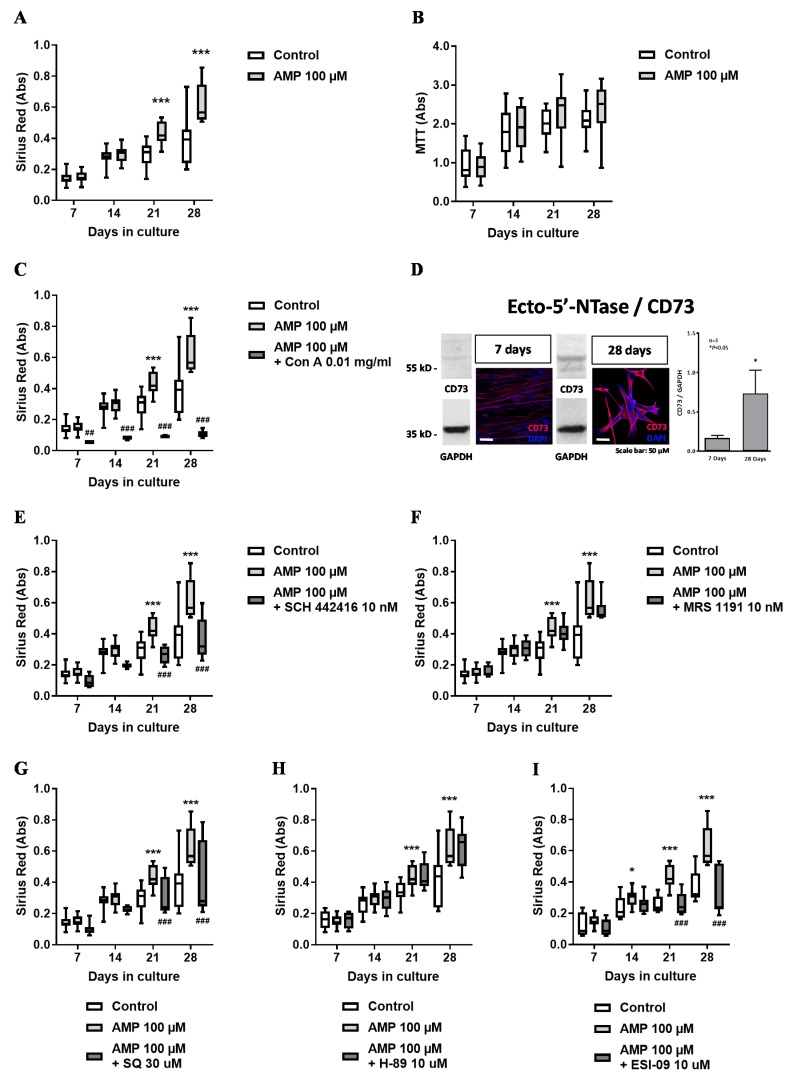Figure 2.
Preferential effect of the adenosine precursor, AMP (100 µM), on collagen production (Sirius Red staining, panel A) by human subcutaneous fibroblasts (HSCF) kept in culture for 28 days with no significant effect on cells proliferation/viability (3-[4,5-dimethylthiazol-2-yl]-2,5-diphenyltetrazolium bromide (MTT) assay, panel B). The effect of AMP (100 µM) was prevented by the ecto-5′-nucleotidase/CD73 inhibitor, concanavalin A (0.01 mg/mL, panel C), indicating that the nucleotide must be converted into adenosine to exert its pro-fibrotic effect. Panel D shows that ecto-5′-nucleotidase/CD73 immunoreactivity increases with the time of the cells in culture, as evidenced both by immunofluorescence confocal microscopy and by Western blot analysis normalized by the glyceraldehyde 3-phosphate dehydrogenase (GAPDH) content of the cells. Nuclei are stained in blue with DAPI. Shown are representative data from three different individuals; experiments were performed in triplicate. The involvement of A2A receptors coupled to the adenylate cyclase (AC)/exchange protein activated by cyclic AMP (EPAC) pathway was proven by prevention of the pro-fibrotic effect of AMP with SCH442416 (10 nM, panel E), SQ22536 (30 µM, panel G), and ESI-09 (10 µM, panel I), which blocked the A2A receptor, AC and EPAC, respectively. Blockage of the A3 receptor and of protein kinase A with MRS1191 (10 nM, panel F) and H-89 (10 µM, panel H), respectively, was devoid of effect. Boxes and whiskers represent pooled data from at least three different individuals; 4–6 replicas were performed for each individual. * p < 0.05 and *** p < 0.001 (two-way ANOVA) represent significant differences compared to control conditions in the same individual; ## p < 0.01 and ### p <0.001 (two-way ANOVA) represent significant differences compared to the effect of AMP in the same set of experiments.

